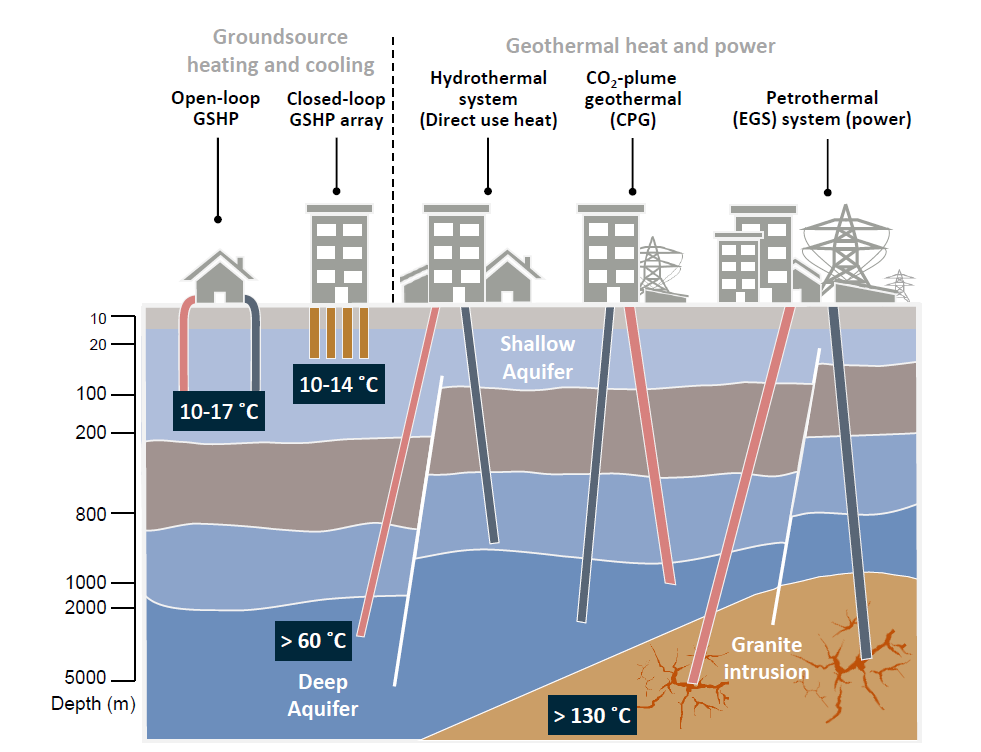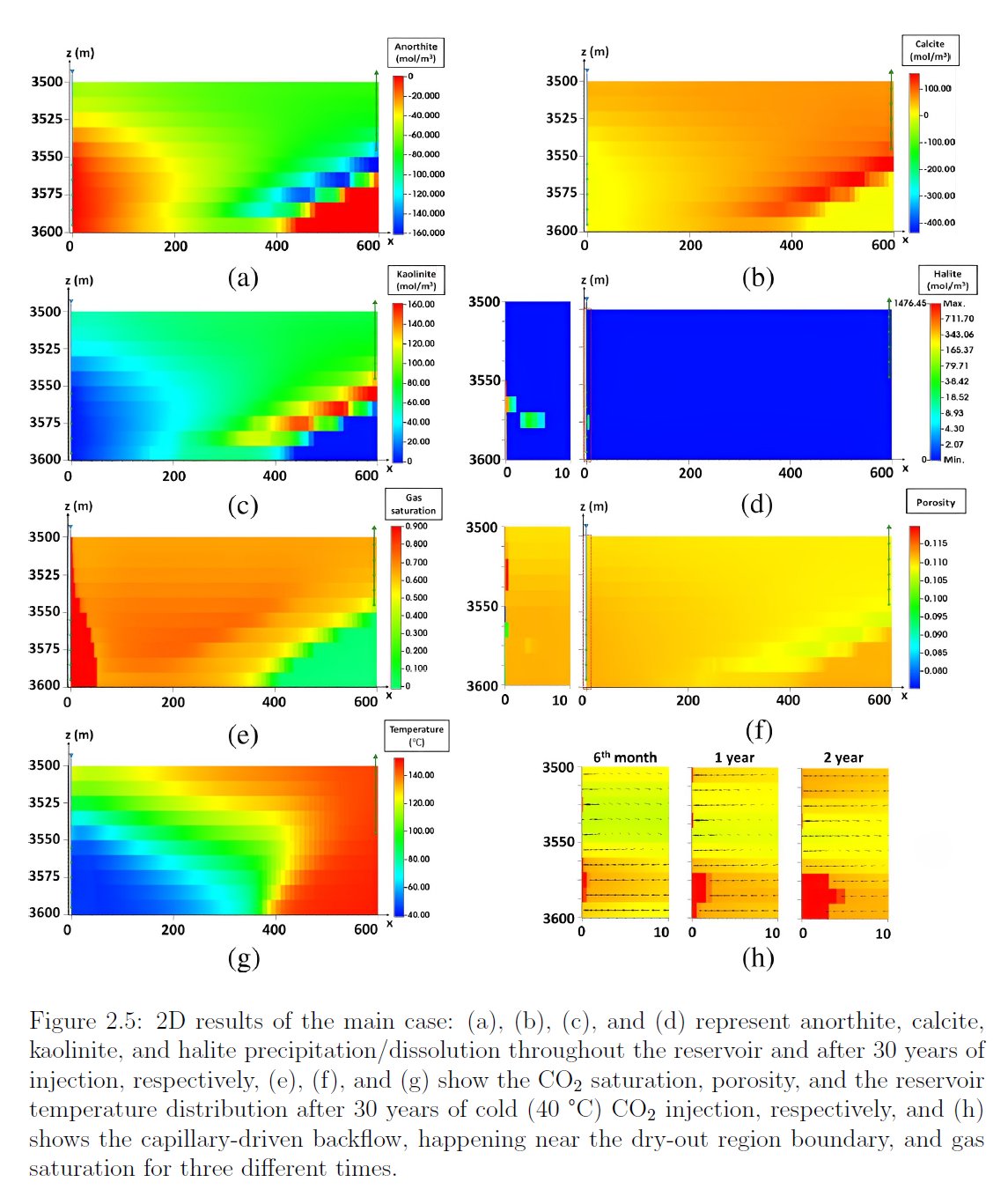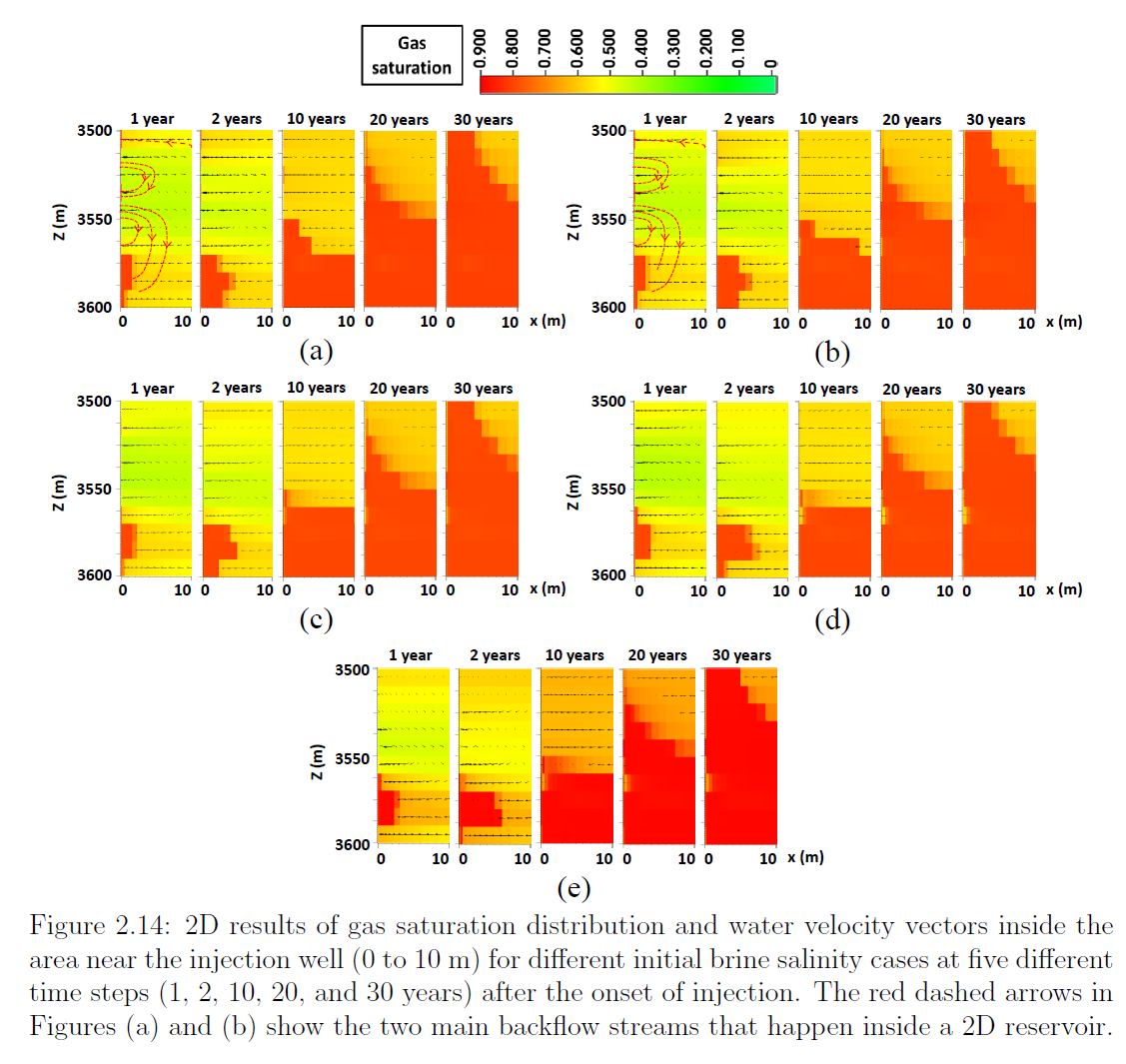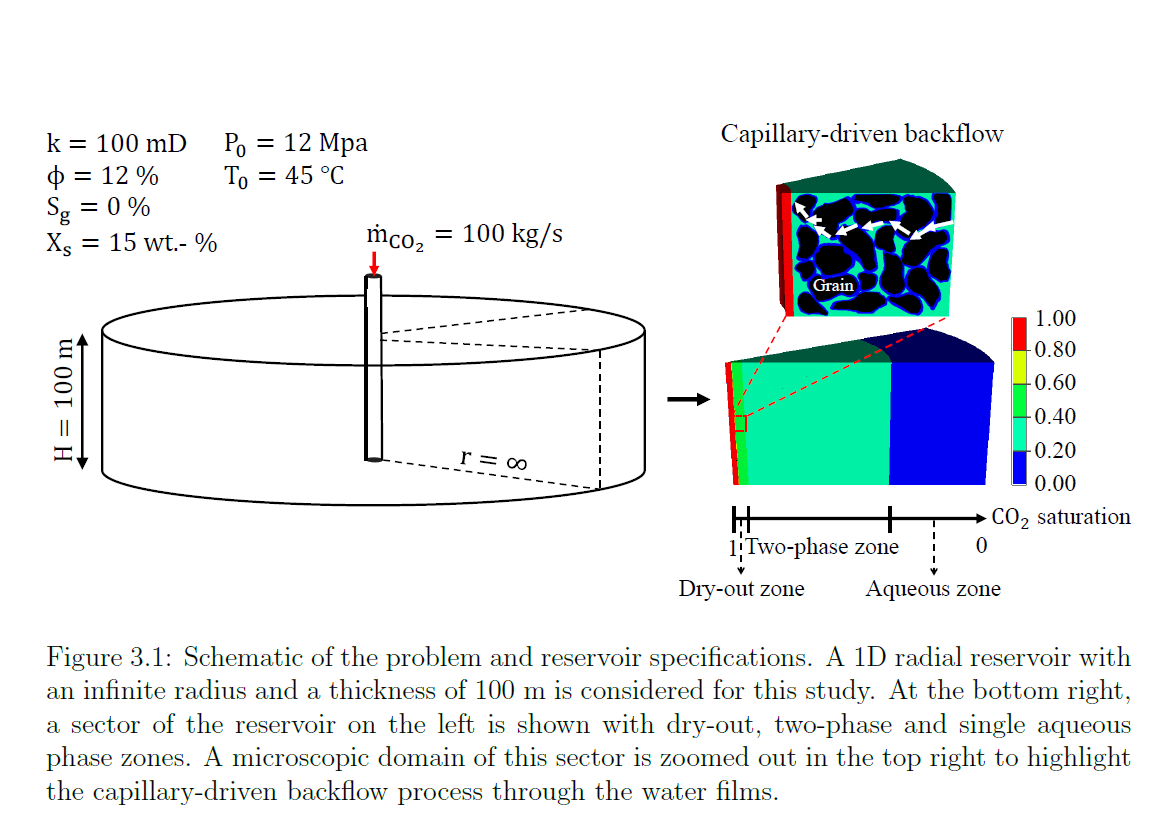Geothermal Heat Recovery Under Heterogeneity of Porous Media, Transport and Fluid Properties
数据显示,化石燃料燃烧产生的二氧化碳排放约占2017年电力和热能生产的41%。为了实现零排放目标,发展低碳发电方式并减少电力和热能生产部门的碳排放至关重要。地热能作为一种适应性强且规模庞大的资源,可以通过将CO2密封在地下含水层中实现碳捕获和储存。引入CO2作为替代工作流体的地热系统称为二氧化碳羽流地热(CPG)。尽管超临界CO2的热容量比水低,但其低粘度导致较低的压力损失和更高的产出速率。此外,由于注入井和生产井之间的密度梯度产生的自然热虹吸流几乎消除了生产井处液体泵送的需求。
然而,地球化学、热物理和地下水文地质参数都会对这类系统的效率产生影响。一个主要关注点是地下水层中注入CO2时发生的化学反应,特别是毛细作用增强的盐沉淀,在注入井周围会导致渗透率降低和压力升高。第二个关注点是地质的不确定性和非均质性,对系统性能有显著影响。最后,自然驱动的热虹吸流和含水层发电也是一个重要考虑因素。
本研究通过一系列多孔介质和热质传递模型研究,综合分析了所有这些关注点。首先,研究了盐沉淀和毛细回流的影响,并提供了一个分析解来估计在盐水含水层中注入CO2时沉淀的量和范围。毛细作用对沉淀盐的数量有明显影响,不可忽视。然而,剧烈的盐沉淀主要发生在注入井附近的区域,对系统整体性能和发电效率影响不大。其次,通过生成各种2D和3D非均质含水层模型,对不同影响参数进行研究,优化了性能参数。发现非均质性会显著降低系统性能,最高可达75%。最后,通过将直接使用CO2作为工作流体的发电厂与井口和含水层模型进行耦合,并提供全面的发电敏感性分析。本研究为CPG发电系统的运作和性能提供了深入洞察,并就可行性、性能和挑战提出了建议。

Abstract
Electricity and heat generation activities accounted for about 41% of the carbon dioxide (CO2) emissions from burning fossil fuels in 2017. Therefore, developing low-carbon means of power generation and decarbonising the electricity and heat generation sectors are crucial steps in the transition to net zero. Geothermal energy is an adaptable and enormous resource, and when used in combination with carbon capture and storage can prevent CO2 from reaching the atmosphere by sequestering it in saline aquifers located deep underground. CO2 was introduced as an alternative working fluid in geothermal systems, defining the concept of CO2-plume geothermal (CPG). Although scCO2 has a lower heat capacity than water, its lower viscosity results in a lower pressure drop and higher production rates. Moreover, the naturally generated thermosiphon flow (resulting from the density gradient between the injection and the production well) almost removes the pumping requirements at the production well.
However, there are a plethora of geochemical, thermophysical, and subsurface hydrogeological parameters that affect the efficiency of such systems. One of the main concerns about injecting CO2 in saline aquifers is the geochemical reactions (specifically capillary-enhanced salt precipitation) that happen inside the aquifer and can damage the aquifer by reducing its permeability and increasing the pressure build-up near the injection well. Second is the geological uncertainty and heterogeneity that significantly affects the system performance. Last but not least, and arguably the most important, is the naturally-driven thermosiphon flow and power generation from the aquifer.
The present work covers all these concerns in separate but coherent and integrated pieces of research, using a range of porous media and heat and mass transfer modelling studies. First, salt precipitation and the effect of capillary backflow are studied, and an analytical solution is provided to estimate the amount and extent of the precipitation when injecting CO2 in a saline aquifer. Capillary pressure significantly affects the amount of precipitated salt and should not be ignored. Nevertheless, intense salt precipitation mainly occurs in a close area near the injection well. Therefore, its effects on the system’s overall performance and power generation are insignificant. Second, using the developed codes and models, various 2D and 3D heterogeneous braided aquifer realisations are generated, and performance metrics are optimised by studying different affecting parameters. It is observed that heterogeneity significantly reduces the system performance by up to 75%. Finally, a direct CO2 power plant is coupled with the well and aquifer models, and a comprehensive power generation sensitivity analysis is provided. This study has offered a more profound insight into the operation and functionality of CPG power systems and proposes recommendations on their feasibility, performance, and challenges.

Figure 1.2: Geothermal energy technologies: ground source heat pump for relatively shallow depths, and hydrothermal systems, CPG, and engineered geothermal systems (also known as Hot Dry Rock or HDR) for deep geothermal sources (modified from [11]). Compared to EGS, CPG targets shallower aquifers with higher natural permeability.




